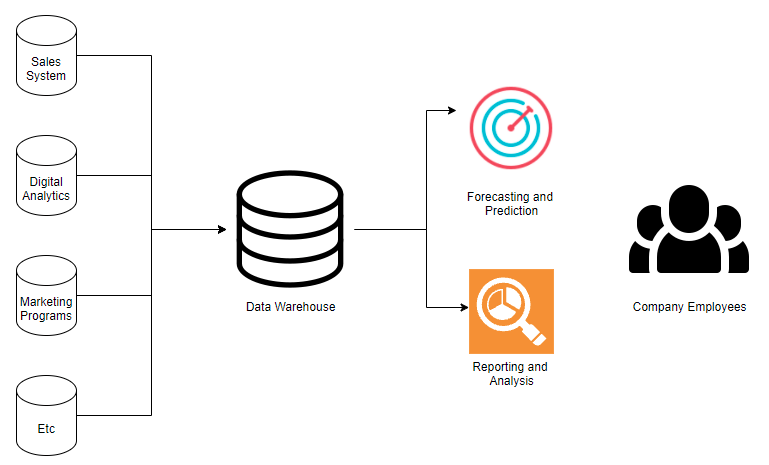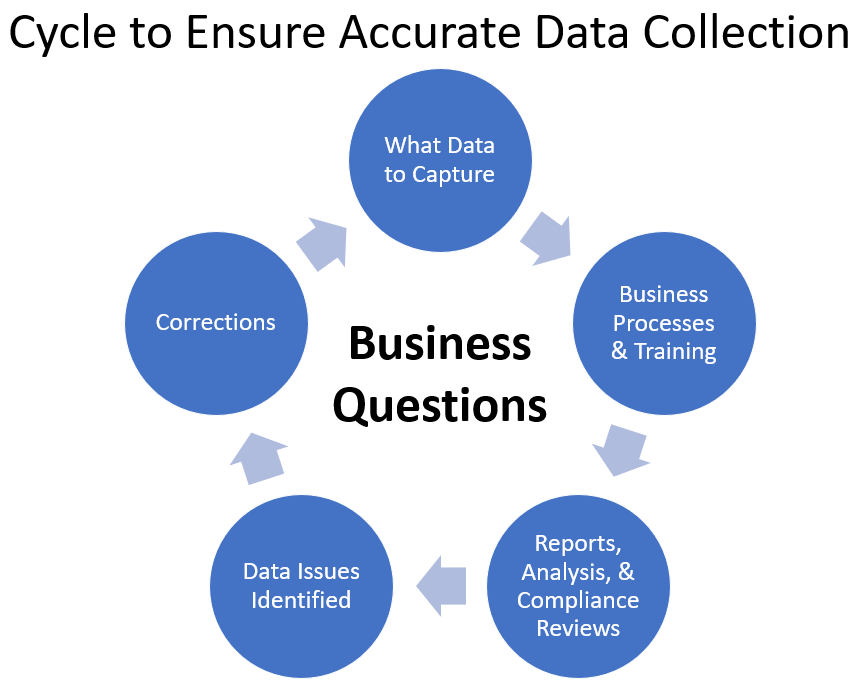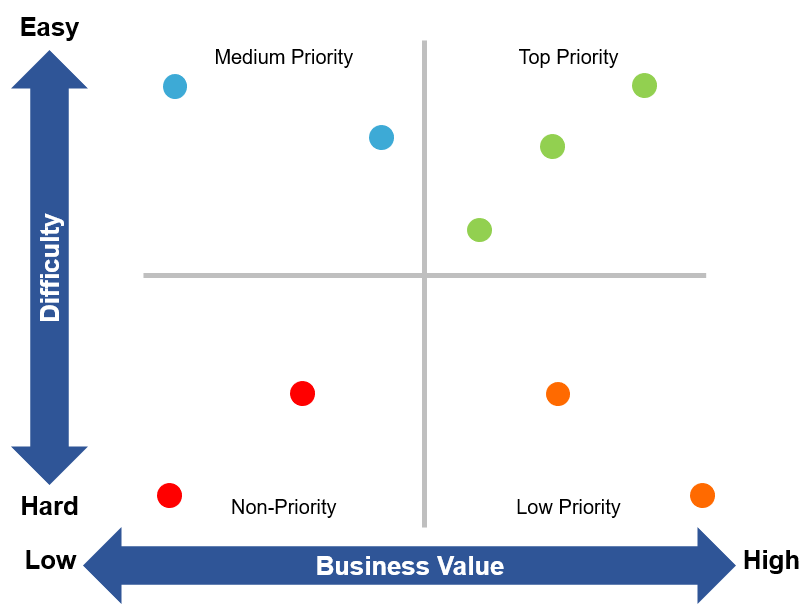Analytics Blog

Your Data Warehouse Is Only as Good as Your Preparation
You’ve heard it said that, if you want to grow your business, and if you want to have success, you need data. And having a data warehouse for your data is critical. With a data warehouse, you can combine and integrate data from all your sources into one location. Once you have your data, you can analyze it, answer business questions, learn what’s working and what’s not, and create forecasts or models to predict outcomes. You can make data-driven decisions!

Having a data warehouse is the apex of running your company — a necessity. In the past, creating a data warehouse was a big and risky project. If you didn’t do it right, you could wind up with a failed data warehouse (never got implemented), or the implementation resulted in unusable, inaccurate data. However, technology has advanced, so creating a data warehouse is no longer such a daunting task. That said, just because the technology has made it easier doesn’t mean you’re ready to take on such a task, much less achieve any better results.
Failing to Prepare is Preparing to Fail
Consider the following analogy: In 1953, Mount Everest was summited for the first time. It had been attempted many times before only to be met with failure and frequent death. In fact, in 1924, with what would be considered completely inadequate technology (wool jackets and pants, boots with nails in the soles to grip the snow and ice, no oxygen, and limited climbing gear) George Mallory and Andrew Irvine attempted to summit the Northeast ridge of Mount Everest. They were never seen again. But in 1999, their bodies were found at an incredible altitude of 26,980 feet, only 2,052 below the summit. It’s unclear if they reached the summit.
Come 1996, the climbing technology and knowhow had advanced considerably, and the number of people who had successfully summited Mount Everest was in the hundreds. Climbing companies were formed, and for a fee they would take anyone to the top of Mount Everest. The end result? 12 climbers died that year trying to summit Everest, including several of the climbing consultants themselves. The technology existed, the proper preparation did not.
Be Prepared

Creating a data warehouse exposes the underlying flaws of your business processes and procedures, and the data you’re collecting. A successful data warehouse requires, first and foremost, that you understand what questions you need to answer to determine if your business is running successfully and meeting its goals and objectives.
Once you know the questions, you need to ensure that the data needed to answer those questions is being captured. It requires that you set up business processes, practices, and training to ensure that the needed data is collected consistently and accurately every time. Until you get to this point, any data warehouse you have and any reporting tools you use, no matter how fantastic and technologically advanced, will be fraught with struggles and result in inconsistent or useless answers to your business questions.
Business Questions to Ask
Consider the following common question for many companies: What sales practices result in converting leads into sales? The question meets the adage of “do more of what works and less of what doesn’t.”
- To answer the question, are you capturing the steps that the salespersons take, so that you can effectively answer this question?
- How often did the salesperson contact the client? (Capture each contact with a date/time and the salesperson(s) making the contact)
- What was the method of contact? (Capture contact method: email, phone call, video conference, etc.)
- What was the purpose of the contact? (Capture contact purpose: introductions, identifying client needs, pitching products/solutions/capabilities, reviewing proposal, etc.)
- Etc.
Next, what business processes, practices, training, and enforcement are being implemented to ensure the data is captured correctly and accurately each time?
- Define common terminology which’ll be used across all tools. For example, in all systems, make sure you use the same contact methods; don’t have phone calls in one system also mean phone or video conference, as they’re different, and you want to distinguish this difference across all systems and data sources.
- Set up the system to ensure:
- Specific data is auto filled (date/time stamps), or
- A dropdown list of options is available (Contact Method), to avoid typos or users defining data differently
- Don’t allow the user to save/exit the data entry unless all required fields are completed
- Train salespeople on the systems used, the processes, and procedures, and ultimately why the data is so important (what it’ll be used for)
- Etc.
Capturing the Right Data
How long does it take to move a lead to a qualified lead? How long from a qualified lead to a proposal? How long from a proposal to a won or lost deal?
Are you capturing the data needed? Sometimes the salespeople don’t always track progress of leads they’re working. They might work with a lead for months, and when the deal is signed, the lead goes from a lead to a won deal. As such, no date was ever collected for when the lead became qualified, Proposal submitted, etc. The end result? It looks like it takes one 100 days to move from lead to qualified lead, and 0 days to proposal and another 0 days to won/lost deal, because the dates are all the same.
Ensuring business processes are in place, providing training, and enforcing compliance through reviews and reports will help ensure that you’re collecting the data needed to help you answer your questions, resulting in effective decisions and actions based on the data. If you don’t collect what’s needed, or it’s sporadic or inaccurate, you’ll be making decisions on faulty or incomplete data, which could be disastrous.
Setup and Action Land
Here at Blast, we talk about “Setup Land” and “Action Land.” Action Land is where the fun is. It’s where data is analyzed, patterns of success and failure are identified, insights are found, recommendations are made, and actions are taken based on data. But Action Land is nothing but a barren desert if Setup Land was never built properly. Setup Land is the foundation to your success.
This doesn’t mean you shouldn’t embark on creating a data warehouse until you’ve examined every aspect of your business. In fact, setting up a data warehouse, incrementally, can help you identify where your business questions are deficient and data collection is lacking.

Start Small to Increase Success
Start your data warehouse small and build incrementally in an agile fashion. This allows you to get usable results quickly and uncover flaws before you get too far. Start by identifying business questions you need to answer. Prioritize the questions based on business value and difficulty to implement. Start with the question that has the highest business value and the lowest difficulty to implement (low hanging fruit)

Once the data required for the highest priority question is in your data warehouse, create reports, visualizations, dashboards, and analysis providing answers to the questions. This usually results in several possibilities:
- The data needed to answer the question isn’t in a state where it’s usable. You’ll need to determine what needs to be added or fixed, and what business processes need to be implemented to ensure accurate capture of data going forward.
- The question is answered, but you learn that you were asking the wrong question. This is where the agile process pays off. You can now pivot and determine the correct question to be answered. You haven’t wasted months of effort to create a data warehouse with all your data, only to discover you set it up incorrectly.
- The question is answered, and the information is valuable, but it also drives a whole new set of questions. The resulting questions might be more important than the list of questions you already have. Because you’re in an agile process, you can re-prioritize and address the next most important and easy to implement question!
Start Building Your Data Warehouse
Data is critical to run and grow your business. Without data, the decisions and actions you take are guesses or gut feels at best. But creating a data warehouse isn’t a cure all. It’ll point out the flaws in your business processes and practices and the shortcomings of your data collection, and possibly uncover that the answers to questions you thought would help you understand and improve your business were flawed. However, just like any setback, you can use it to learn and grow, using your findings to change, improve, and become more disciplined and focused.
Don’t assume that because technology allows you to do something, you’ll succeed. You need to put in the work, the preparation, and the setup to succeed. And if you need help, reach out to Blast. We have years of experience helping clients successfully implement data warehouse and reporting systems. We’ll help you be properly prepared, so you won’t be stranded on Mount Everest!








